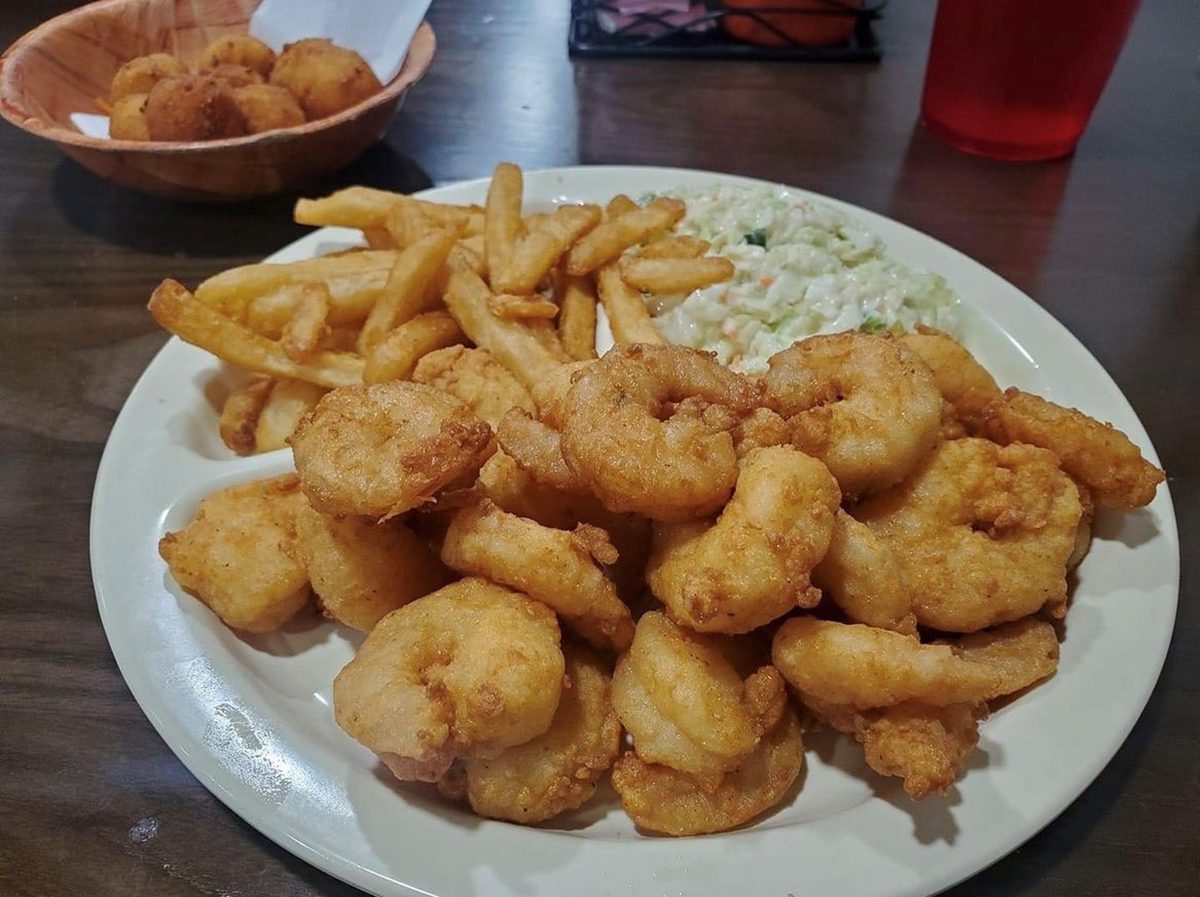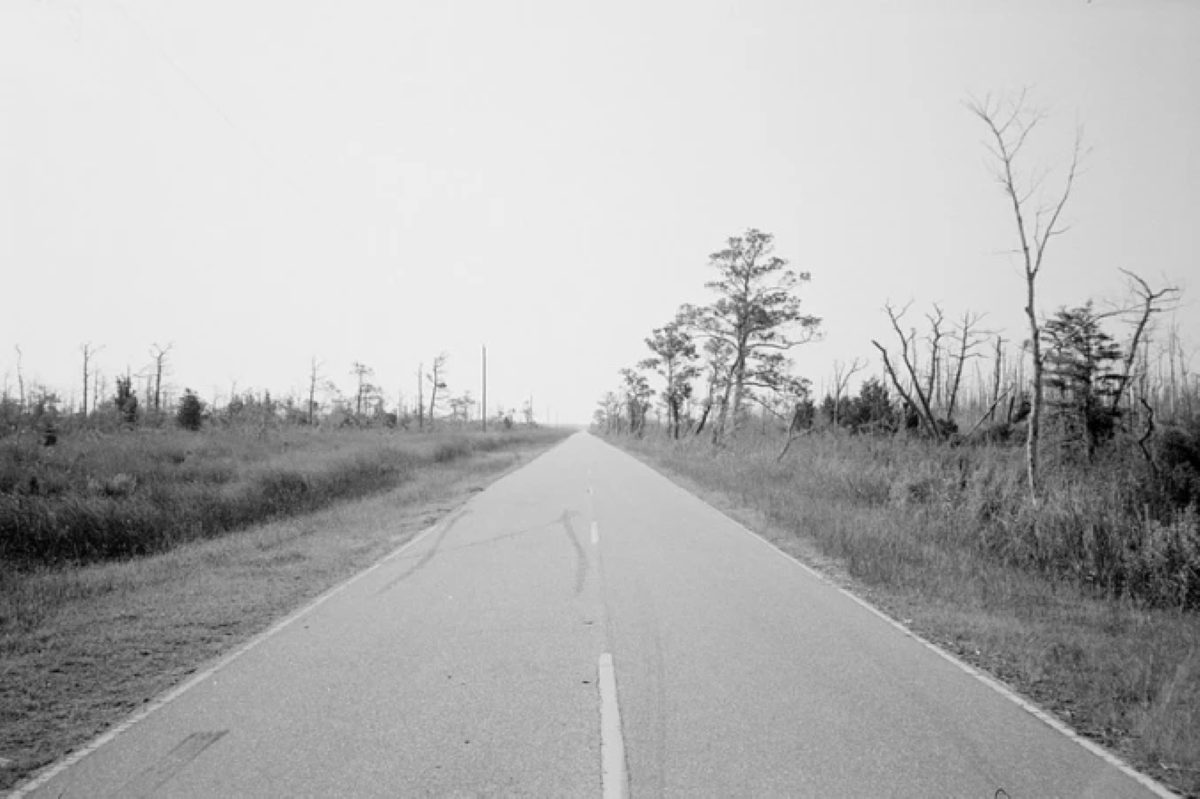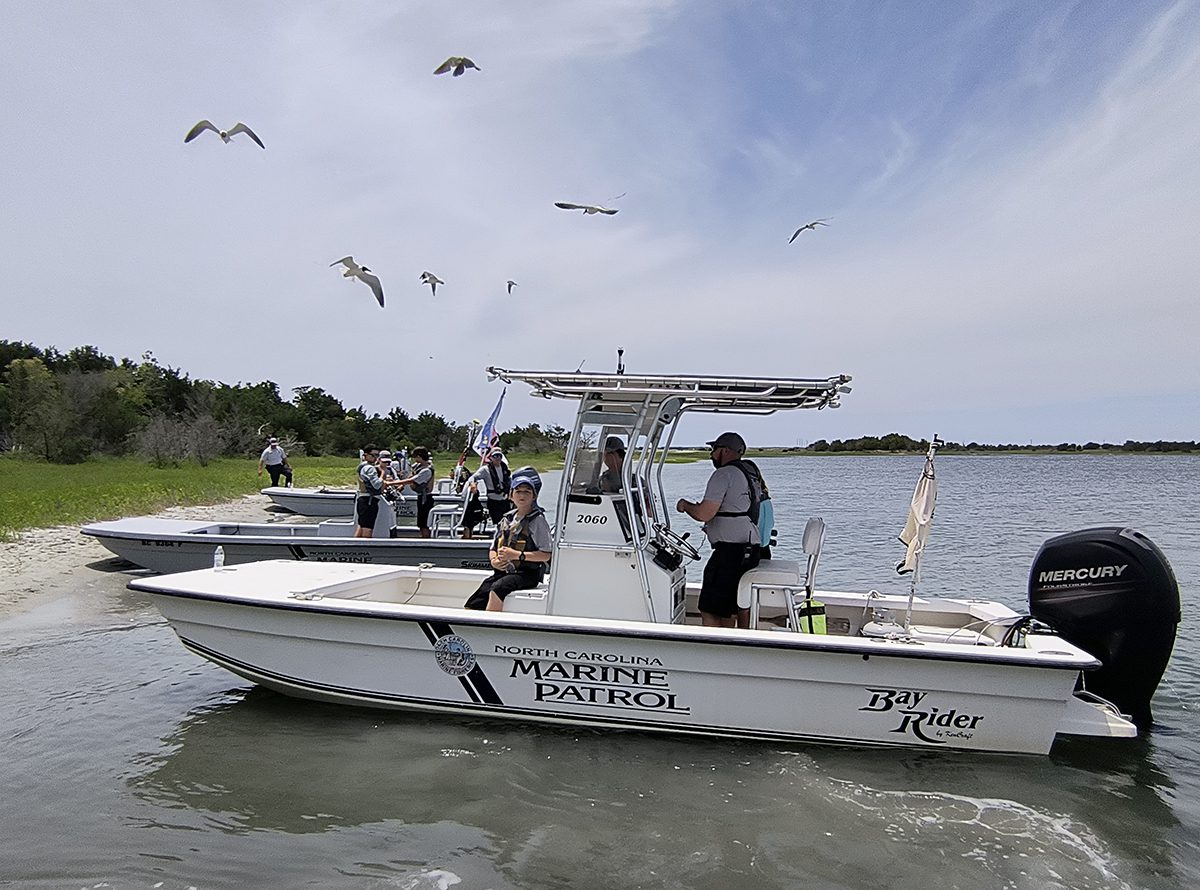This is part a monthly series about the food of the N.C. coast. Our Coast’s Food is about the culinary traditions and history of N.C. coast. The series covers the history of the region’s food, profiles the people who grow it and cook it, offers cooking tips — how hot should the oil be to fry fish? — and passes along some of our favorite recipes. Send along any ideas for stories you would like us to do or regional recipes you’d like to share. If there’s a story behind the recipe, we’d love to hear it.
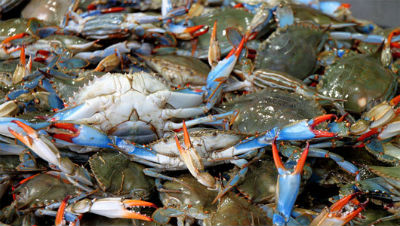 Blue crabs’ pugnacious and cannibalistic traits are forgotten when golden-brown crab cakes land on the menu. |
Blue crabs’ lives are tales of violence, cannibalism and pain — until their story turns to crab cakes.
The live crustaceans’ toothy claws can bloody a finger in a single bite. Big crabs make hardy meals out of their smaller brethren. A crab even gnawed mighty Hercules’ pinned foot as the Greek god battled to save the world from the nine-headed serpent Hydra.
Sponsor Spotlight
“A crab is like a buzzard. It will eat anything,” Scott Rader, Cape Fear-area commercial fisherman, once said.
All that ferocity is forgotten when meaty, golden-brown crab cakes land on the menu.
“Every bite is a delight,” Jeanne-Darc Wehbe said of the fat crab cakes she and her husband, Tony, prepare at their Pelican Seafood market and café on Long Beach Road, between Southport and Oak Island.
Like most crab cake lovers, the Wehbes offer firm instructions for perfect crab cakes.
Sponsor Spotlight
“One hundred percent North Carolina, fresh crab meat — no filling,” Jeanne-Darc said.
Despite the blue crab’s fierce appearance and aggressive nature, its scientific name, Callinectes sapidus, taken from Latin and Greek, means beautiful or savory swimmer. The crustacean’s characteristic sweetness and tender, juicy meat are what crab cake fans have always been after.
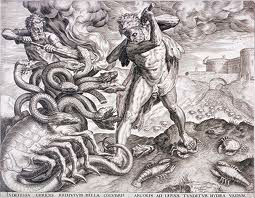 The engraving shows the second labor of Hercules: slaying the Lernaean Hydra. Note the crab clutched to his left foot. The engraving shows the second labor of Hercules: slaying the Lernaean Hydra. Note the crab clutched to his left foot. |
American crab cakes date back to colonial times. They’re a spinoff of English meat cakes, food historians say. Cooks then, as now, liked crab cakes because they tasted good. Recipes took off in the 1800s. By the 20th century, “crab patties” and “crab croquettes” became known as “crab cakes.”
A 1685 recipes calls for nutmeg and almond paste. Later formulas suggested a hollandaise-like sauce, but mostly throughout time crab cakes remained simple, highlighting the meat’s sweet flavor.
Cheaper, less attractive claw meat makes delicious crab cakes, noted Joyce Taylor, author of Mariner’s Menu: 30 Years of Fresh Seafood Ideas (University of North Carolina Press, 2003) Claw meat’s brown tint and slightly coarse texture is less apparent in a crab cakes. Still, body meat, either top-of-the-line lump crab or the slightly lower-grade backfin meat, supply a sweeter taste and much finer texture.
Whatever grade is chosen, select fresh, unpasturized crab meat, Taylor advised.
Unpasturized crab meat consists of fresh, cooked, picked and packaged crab meat. Highly perishable, it must be used within a couple days. Pasturized meat is cooked and sealed in cans that may be kept refrigerated for several months. Taylor thinks unpasturized, fresh crab from a reputable, local source tastes better in crab cakes.
Her other advice mimics that of the Wehbes: Don’t add too much filler, whether bread crumbs or cracker meal, and don’t muddy the crab’s flavor by overseasoning.
Taylor’s recipe, named Deluxe Crab Cakes, contains just 1½ tablespoons of cracker crumbs to a pound of crab.
“The only problem with this recipe is it has so much crab meat it’s hard to keep them (crab cakes) together,” she said.
Gently forming the cakes aids the shaping process, and refrigerating them briefly before frying helps the cakes stay together in the pan.
A little seasoning is OK. Fresh parsley has been added since the 1600s. A touch of lemon juice balances the crab’s richness, as Taylor’s crab cakes prove. Fry crab cakes in neutral-flavored oils, as butter will overwhelm their savor.
Wilmington chef Keith Rhodes of Catch restaurant in Wilmington favors fresh ginger over lemon juice to zest his crab cakes. In 2011, Rhodes won the N.C. Seafood Festival Cooking with the Chefs crab cake contest in Morehead City.
The competition, judged by diners and professional cooks, gave Rhodes the opportunity make the statement dreamed about by seafood restaurant chefs and home cooks alike: “Come try our award-winning crab cakes!”
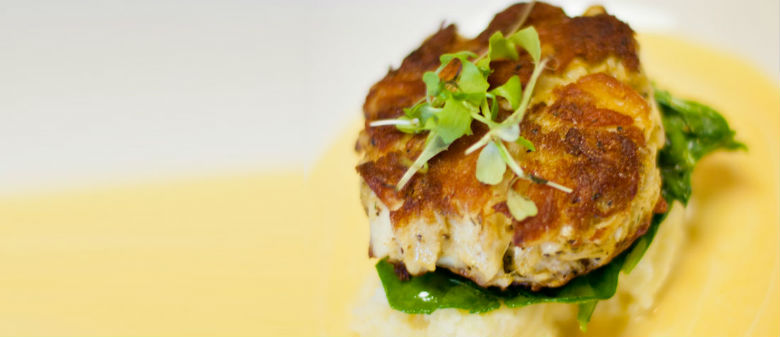
Chef Keith Rhodes’ award-winning Carolina crab cake with Texas Pete aioli.
Deluxe Crab Cakes
1 egg beaten
2 tablespoons mayonnaise
½ teaspoon dry mustard
1/8 teaspoon cayenne pepper
1/8 teaspoon Tabasco sauce
½ teaspoon freshly ground white pepper
1 pound unpasturized lump, claw or a combination of both
3 tablespoons minced fresh parsley
1½ tablespoons fresh cracker crumbs
Vegetable oil for frying
Lemon wedges
In a medium bowl, whisk together egg, mayonnaise, mustard, cayenne pepper, Tabasco sauce and white pepper. Add crab meat, parsley and cracker crumbs to the bowl. Gently toss mixture together using a fork.
Shape mixture into 6 to 8 patties, each about 1 inch thick. Wrap the patties in wax paper and refrigerate for 30 minutes.
Place a heavy, large skillet on the stove over medium-high heat. Pour oil into the pan to depth of about ¼ inch. Remove crab cakes from the refrigerator. When oil is hot, add crab cakes to the pan, working in batches if necessary so as not to crowd the pan.
Fry crab cakes until golden brown on one side, about 4-5 minutes. Flip cakes and fry the other side. Drain crab cakes on a paper-towel-lined platter. Serve with lemon wedges.
Serves 6.
Source: Mariner’s Menu: 30 Years of Fresh Seafood Ideas (University of North Carolina Press, 2003) by Joyce Taylor.
Carolina Crab Cakes with Texas Pete Aioli
1 pound N.C. jumbo lump crab meat
½ tablespoon minced fresh ginger
1 teaspoon each of sea salt and white pepper
1 large egg yolk
2 tablespoons mayonnaise
6 saltine crackers, ground to a powder
Combine all ingredients in a large bowl and shape mixture into 3-ounce cakes. You should get about 5 cakes per pound of crab meat. Place a large sauté pan over medium heat. Add about 1/3 cup of soybean oil. When oil is hot, add crab cakes and cook 4 minutes per side until toasted brown crust appears. Remove crab cakes from pan. Drain on a paper-towel-lined platter. Serve with Texas Pete aioli.
Makes 5 crab cakes.
Texas Pete Aioli
1 cup mayo
1/3 cup Texas Pete hot sauce
1 tsp garlic powder
1 tsp white pepper
½ tbsp honey
Whisk all ingredients together in a medium bowl. Makes 1 cup.
Source: Chef Keith Rhodes, Catch restaurant, Wilmington.



